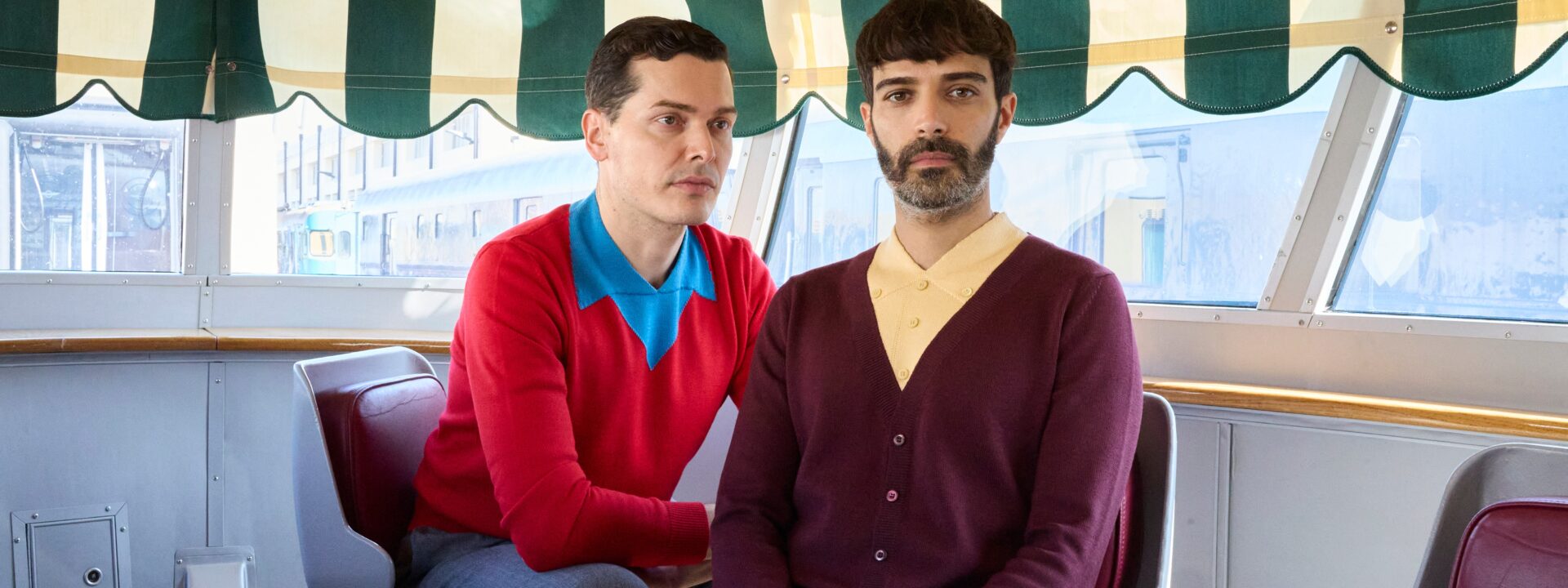All aboard the Prada express! Last week, the fourth edition of Prada Frames—an annual symposium of cross-disciplinary discussions held alongside Milan’s Salone del Mobile—arrived at the city’s Centrale train station, tackling pressing contemporary issues through the lens of design and culture.
Each year, the event is curated by Formafantasma, the design and research studio founded in 2009 by Andrea Trimarchi and Simone Farresin. Their work explores both natural and built environments, seeking new material and social possibilities. Moving beyond the week’s typical displays of furniture and homeware, Farresin and Trimarchi’s approach to Prada Frames has evolved over the past four years. The 2022 edition, On Forest, examined the ecological, cultural, and philosophical significance of forests. This was followed by 2023’s Materials in Flux and last year’s Being Home, which delved into materiality, domesticity, and socio-economic systems. Each event fostered an intimate atmosphere.
This year’s theme, In Transit, focused on the visible and invisible infrastructures that shape our daily lives. “We’re interested not just in how objects are designed, but in the systems that support and move them,” says Trimarchi.
The choice of venue always reflects the theme. Past locations include a 19th-century neo-Renaissance house museum and Milan’s historic Teatro Filodrammatici. For 2025, part of the symposium took place aboard the Arlecchino train, designed by Gio Ponti and Giulio Minoletti—a symbol of post-war Italian design and the La Dolce Vita era—while other talks were held in the station’s Royal Pavilion, once reserved for royalty and heads of state. “These aren’t just venues—they’re part of the narrative,” says Trimarchi. “They embody mobility and infrastructure as tangible, historical realities. We want people to feel immersed in the systems we’re discussing.”
Since Being Home, the symposium has done away with visual aids, focusing solely on the speakers. “This encourages intimacy and pure exchange of ideas—a contrast to the highly visual nature of most Salone events,” Trimarchi explains.
The talks covered ambitious topics, from AI and borders to climate justice, space travel, and global policy. One discussion, led by astrophysicist Ersilia Vaudo and author Nick Hunt (Where the Wild Winds Are), explored navigation across Earth and space, examining how wind routes and planetary frontiers shape these journeys. “Space travel is no longer just a scientific dream—it’s a geopolitical stage,” Vaudo noted. “Whether we reach Mars or not, it stretches our imagination.”
Farresin hopes attendees leave with a “critical awareness” of how design and systems influence movement and access. “These systems aren’t neutral—design can either reinforce or rethink them,” he says. The lineup intentionally spans disciplines—design, ecology, digital theory, architecture, activism—to spark debate. “We curated for tension and friction,” Farresin explains. “The goal was to dissolve boundaries and provoke new questions.”British design critic and writer Alice Rawsthorn has been involved with Prada Frames since its beginning. She agrees this year’s theme touches on something vital yet rarely examined through a design lens. “Prada Frames consistently brings together brilliant speakers to explore diverse topics,” she says. “Every year, I come away with new insights into design’s role in our lives.”
As ever, Mrs. Prada herself is central to the initiative. “From the start, she pushed us to prioritize substance over everything else,” explains Farresin. “She views this not as marketing but as a research-driven cultural project. Her faith in the audience’s ability to engage with complex ideas is unusual and inspiring. This collaboration has taught us so much—here, the learning itself defines success.”
At this year’s Salone del Mobile, Formafantasma also staged Staging Modernity, a performance and installation with historic Italian brand Cassina and director Fabio Cherstich (featuring costumes by Jil Sander) at Milan’s Teatro Lirico Giorgio Gaber. “It honors Modernist principles while challenging their current relevance,” says Trimarchi, “prompting us to imagine a more ecological design future. It extends our ongoing study of how objects and systems intertwine.”
Systems thinking often underpins the duo’s work. Farresin cites Cambio (2020), their Serpentine Gallery-commissioned study of the timber trade, which included furniture crafted from a storm-felled Italian tree—both a climate-change relic and a meditation on material flows. Their latest project, Oltre Terra at Amsterdam’s Stedelijk Museum, examined wool production and human-animal dynamics. “We investigate origins and trajectories, not just finished objects,” Farresin notes. In Transit continues this larger dialogue: “We’re drawn to connections—how things, and people, interrelate.”
Milan Design Week grows more crowded with fashion brands each year, but Trimarchi and Farresin seek quieter moments. “Spectacle matters less than unexpected depth—a student show with real critique, a conversation that shifts your thinking,” says Trimarchi. “Salone can be exhausting, but it surprises you with generosity.” Just don’t miss your stop.
